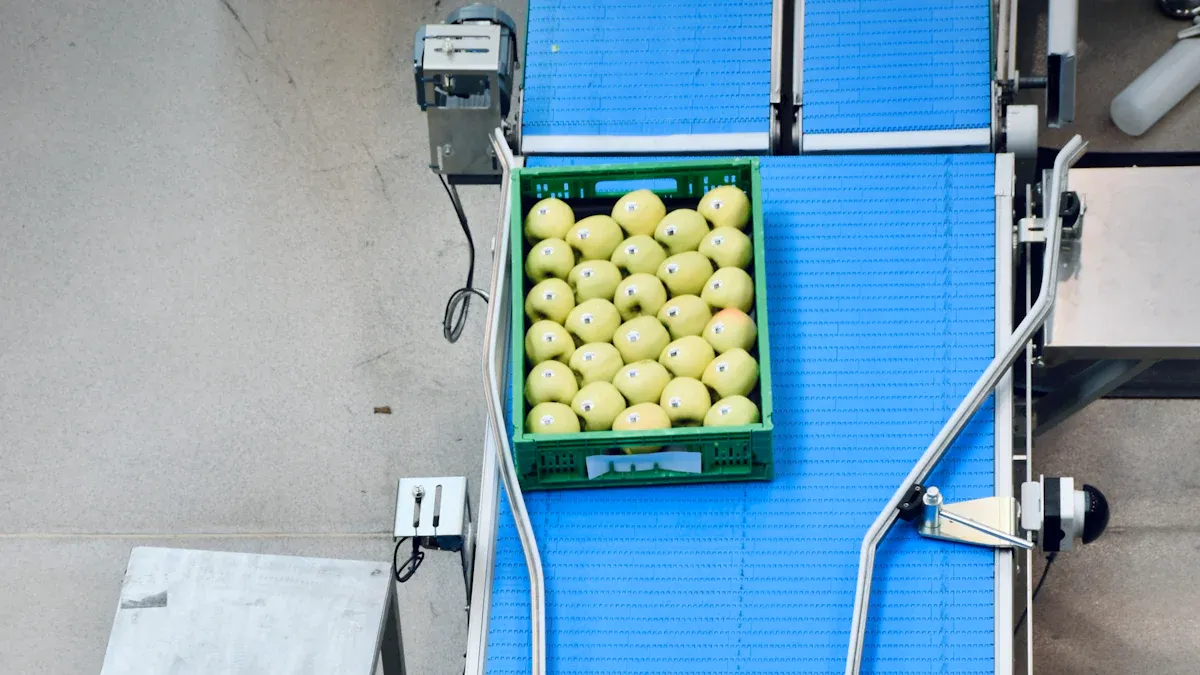- This topic is empty.
-
AuthorPosts
-
2025-08-22 at 4:37 pm #5021
A check weigher checks the weight of packaged goods. It makes sure each item has the correct weight before it leaves the factory. Checkweighers are important for quality control. Almost half of factories and packaging lines use a checkweigher. They help find products that are too light or too heavy. You can count on SINBON to give you advanced checkweigher machines. These machines are accurate, reliable, and easy to use with your other equipment.
-
Many industries use checkweighers to stop waste, save money, and keep customers satisfied.
Key Takeaways
-
A checkweigher checks product weight by itself on a production line. This helps keep quality high and stops waste. In-motion checkweighers weigh products as they move quickly. This keeps the line fast and correct. Static checkweighers weigh one product at a time. They work best for small groups or sample checks. Using a checkweigher saves money and makes products better. It also helps follow industry rules and keeps your brand safe. SINBON has many checkweigher models. They have features like sorting in steps and easy setup for different needs.
Check Weigher Basics

What Is a Checkweigher
A checkweigher is an industrial measuring device that helps you check product weights on your production line. You use a check weigher to make sure every item meets the correct weight measurement before it leaves your factory. This machine sits on your line and checks each product as it passes over the platform. You can think of the checkweigher platform as a smart scale that works automatically. It compares the weight of each item to the acceptable weight range you set.
You might wonder about the difference between a checkweigher and why use one instead of a regular scale. A checkweigher does more than just weigh. It checks every product quickly, sorts them, and helps you keep your quality high. You can rely on a checkweigher to spot items that are too light or too heavy. This helps you avoid waste and keeps your customers happy.
Tip: If you want to keep your production line running smoothly, a checkweigher is a must-have tool for quality control.
How Checkweighers Work
You may ask how it weighs products so fast and accurately. The checkweighing processes use several key parts to do the job:
-
The feeding belt conveyor moves products onto the platform and spaces them out.
-
The weighing belt conveyor collects the weight data as each product passes over the checkweigher platform.
-
The control panel receives signals from the weighing belt and processes the information.
-
The unloading belt conveyor takes the inspected products away from the weighing area.
The system makes sure only one product is on the platform at a time. Sensors detect when a product enters the weighing area. The software then uses this data to get the exact weight. The control board compares the measured weight to your target range. This is called weight comparison.
If the product falls within the acceptable weight range, it stays on the line. If not, the checkweigher activates a reject system. This could be a pusher, air jet, or diverter. These systems remove products that are underweight or overweight. Some checkweighers use a soft reject feature to gently move items that do not meet the acceptable weight range. This helps protect your products from damage.
Checkweighers also record and track weight data for every product. This helps you with quality control and reporting. You can use this information to improve your process and meet industry standards.
Note: Checkweighers use advanced load cell technology to weigh products in real time. This keeps your production line fast and accurate.
Here is a quick look at the core components and how they work together:
-
Feeding belt conveyor: Moves and spaces products.
-
Weighing belt conveyor: Measures weight on the platform.
-
Control panel: Processes weight signals.
-
Unloading belt conveyor: Removes checked products.
-
Sensors and software: Identify products and collect weight data.
-
Reject system: Removes items outside the acceptable weight range.
-
-
AuthorPosts
- You must be logged in to reply to this topic.
